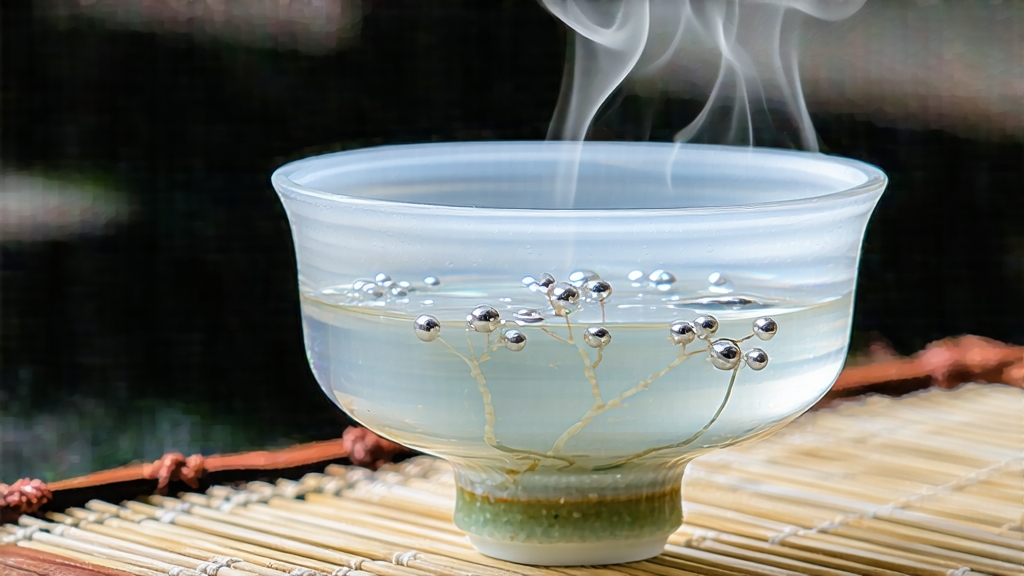
Among the six great families of Chinese tea, white tea is the least theatrical. It is not rolled into tight pearls like green tea, nor twisted into iron coils like oolong; it is not fermented to the maroon of Pu-erh, nor roasted to the charcoal of rock wulong. Instead it arrives on the tray looking almost innocent—loose, feather-light, the color of winter moon on frost. Of its few celebrated children, none carries the aura of aristocratic restraint more convincingly than Bai Hao Yin Zhen, the “White-Hair Silver Needle.” If white tea is the hermit among teas, Silver Needle is the hermit’s single candle: slender, silent, and astonishingly bright.
A story of accidents
Legend places the birth of white tea in the early Qing dynasty, when tea farmers along the Tai Lao mountains of northern Fujian were forced to abandon freshly picked buds after a sudden imperial courier galloped through their village, requisitioning horses. The buds lay in wicker baskets through the hot afternoon and cool mountain night. By morning their edges had dried; a pale fuzz had risen like hoarfrost. Curious, the farmers steeped the half-withered shoots anyway and found a liquor so delicate it tasted like drinking the memory of rain. Whether myth or marketing, the tale captures the spirit of white tea: it is made not by what man adds, but by what he resists doing. Silver Needle, first recorded in 1796 as a tribute for the Jiaqing Emperor, distilled that philosophy into its purest form—only buds, no leaves, no fire, no kneading, only time and air.
Where the down is born
Authentic Silver Needle is picked in the short window between mid-March and early April, when the first warm winds rise from the East China Sea and brush the granite ridges of Fuding and Zhenghe counties. The cultivar must be Fuding Da Bai or the even more pubescent Zhenghe Da Bai, whose unopened buds can reach 3 cm and are swaddled in a down so dense it resembles goose feather. Experienced pickers work backwards through the row, twisting each bud rather than snapping it, so the tiny “fish-tail” base remains intact. A full kilogram of finished tea needs roughly thirty-eight thousand buds—an entire morning’s harvest for five nimble fingers.
The craft of not crafting
Once back at the farmhouse, the buds are spread no thicker than two fingers on water-woven bamboo trays. For the next thirty-six to forty-eight hours they rest in a shaded corridor where louvered windows invite a slow dialogue between mountain breeze and afternoon sun. Moisture leaves the bud so gradually that enzymes remain languid; oxidation hovers at 5–10 %, a mere blush. When the bud’s stem snaps cleanly, the tea is considered “green-alive”; if it bends, it still holds too much water and will sour. Some makers introduce a final half-hour of gentle baking at 40 °C, others trust only the April moonlight—an echo of the original accident. The result is a leaf that looks more like a medicinal herb than a tea: straight, silvery, weightless, smelling faintly of hay, melon skin, and the cool side of a pillow.
Grades hidden in plain sight
Unlike Dragon Well or Tie Guan Yin, Silver Needle is rarely shouted about in grades. Yet insiders distinguish three silent tiers. “Imperial” comprises buds plucked before the Qingming festival, downy from base to tip, steeping into a liquor the pale green of white jade. “Grade One” allows buds gathered before the spring rain, slightly longer, yielding a sweeter, almost lychee note. “Grade Two” includes buds of mixed maturity, still pleasant but thinner in texture, often reserved for scenting with jasmine or aging into compressed cakes. Age itself is a hidden variable: after seven years of dry storage the down darkens to pewter, the aroma turns toward dried apricot and camphor, and the tea enters the realm of Chinese pharmacy, prescribed for cooling internal heat.
Water, leaf, and the pause that tastes
Silver Needle is forgiving to the novice yet revealing to the adept. Begin with a tall glass or a porcelain gaiwan of 120 ml; both allow the buds to stand upright like miniature ivory pagodas. Use 3 g of leaf—roughly two heaping teaspoons—and water just below the first bubble, 80 °C